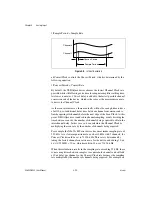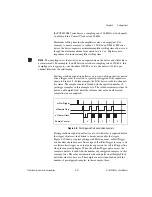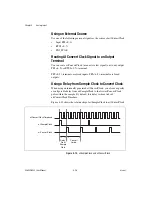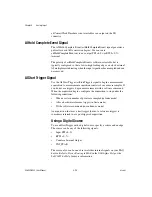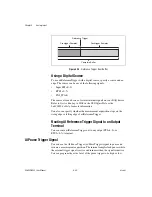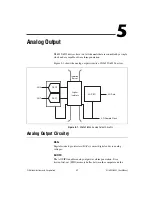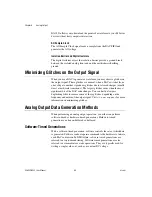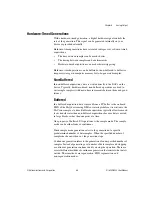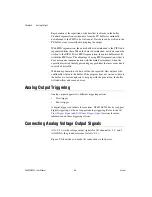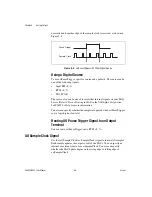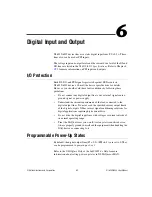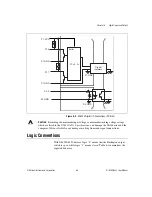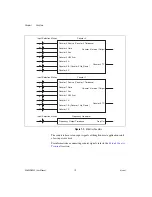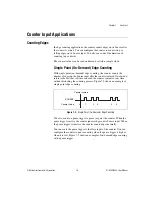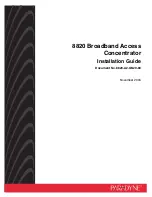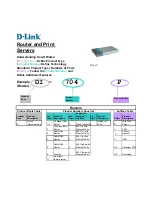
Chapter 5
Analog Output
©
National Instruments Corporation
5-3
Hardware-Timed Generations
With a hardware-timed generation, a digital hardware signal controls the
rate of the generation. This signal can be generated internally on your
device or provided externally.
Hardware-timed generations have several advantages over software-timed
acquisitions:
•
The time between samples can be much shorter.
•
The timing between samples can be deterministic.
•
Hardware-timed acquisitions can use hardware triggering.
Hardware-timed operations can be buffered or non-buffered. A buffer is a
temporary storage in computer memory for to-be-generated samples.
Non-Buffered
In non-buffered acquisitions, data is written directly to the DACs on the
device. Typically, hardware-timed, non-buffered operations are used to
write single samples with known time increments between them and good
latency.
Buffered
In a buffered acquisition, data is moved from a PC buffer to the onboard
FIFO of the DAQ device using DMA or interrupts before it is written to the
DACs one sample at a time. Buffered acquisitions typically allow for much
faster transfer rates than non-buffered acquisitions because data is moved
in large blocks, rather than one point at a time.
One property of buffered I/O operations is the sample mode. The sample
mode can be either finite or continuous.
Finite sample mode generation refers to the generation of a specific,
predetermined number of data samples. When the specified number of
samples has been written out, the generation stops.
Continuous generation refers to the generation of an unspecified number of
samples. Instead of generating a set number of data samples and stopping,
a continuous generation continues until you stop the operation. There are
several different methods of continuous generation that control what data is
written. These methods are regeneration, FIFO regeneration, and
non-regeneration modes.

